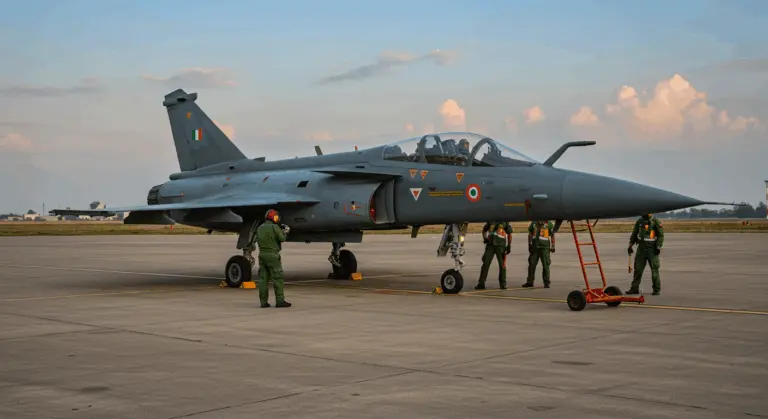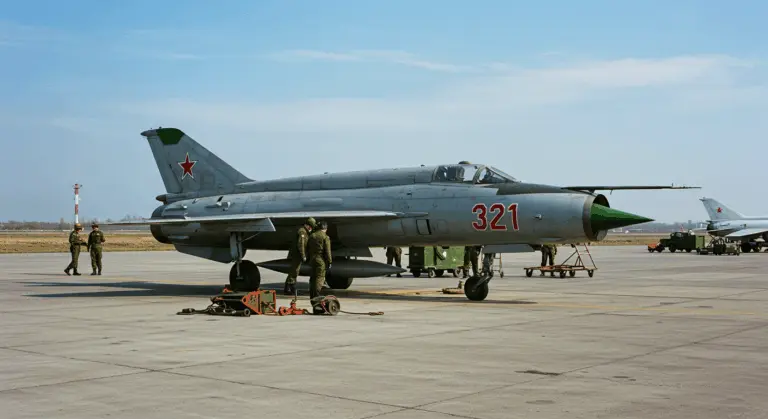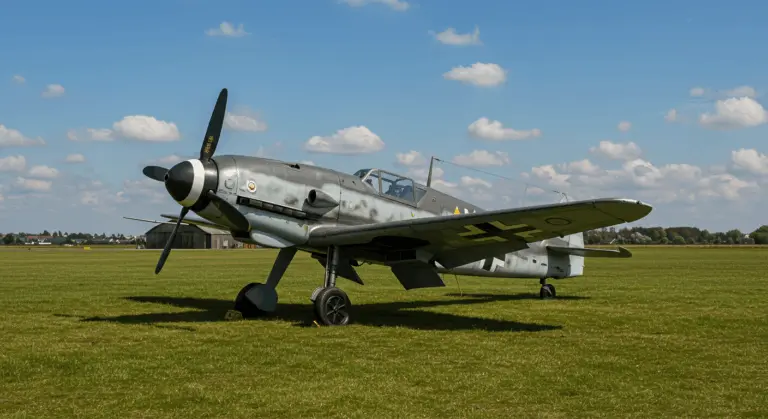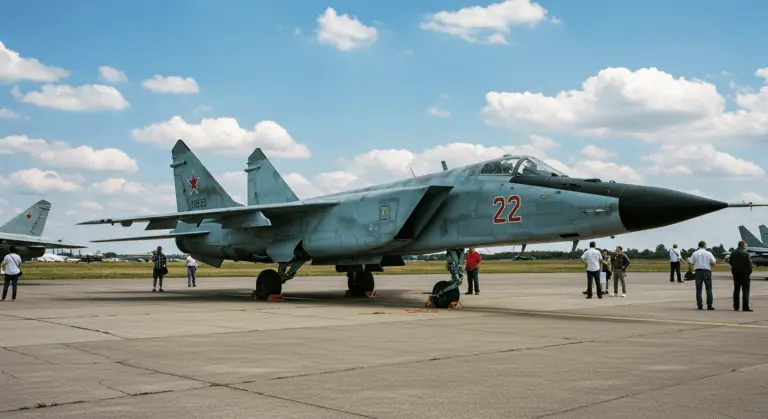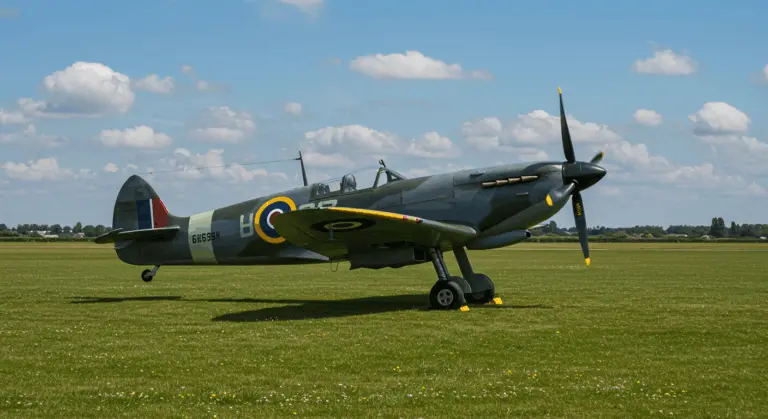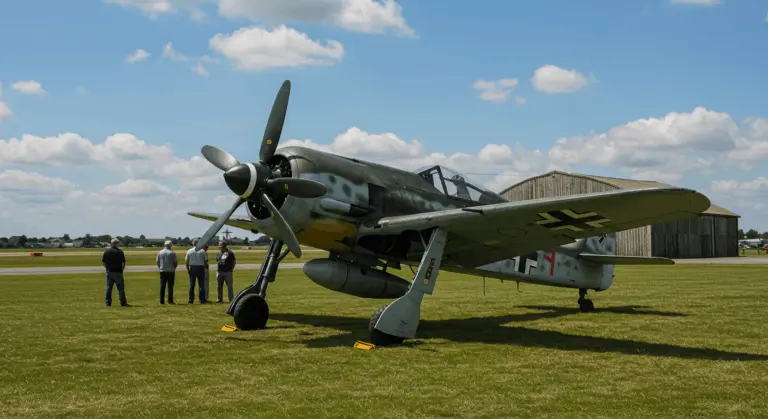Development of the Republic P-47 Thunderbolt
The Republic P-47 Thunderbolt represents a remarkable achievement in American military aviation history. Under the visionary leadership of chief designer Alexander Cartel, Republic Aviation transformed earlier Seversky designs—the P-35 and P-43—into what would become one of World War II’s most effective fighter aircraft.
Driven by wartime requirements for a high-performance, heavily armed fighter, the XP-47B prototype took to the skies on May 6, 1941. The design centered on two revolutionary elements:
This combination provided exceptional speed and altitude capabilities for an aircraft of its substantial size. Republic Aviation continuously improved the design throughout the war, continuously enhancing speed, armament, and operational flexibility to ensure the Thunderbolt stayed competitive in aerial warfare.
Key Features and Specifications
The aircraft was powered by the Pratt & Whitney R-2800 Double Wasp engine, producing over 2,000 horsepower and propelling the Thunderbolt beyond 400 mph. This engine, combined with an advanced turbo-supercharger system, maintained exceptional performance even in the thin air above 30,000 feet.
The Thunderbolt’s armament proved formidable. Eight .50-caliber Browning machine guns were mounted in its wings, making it one of the war’s most heavily armed fighters. Each gun fired at 800 rounds per minute, delivering concentrated firepower.
Physically imposing, the P-47 earned the affectionate nickname ‘Jug’ for its distinctive bottle-shaped fuselage. Its impressive specifications included:
Operational History of the P-47 Thunderbolt
The Republic P-47 Thunderbolt’s operational story became one of the war’s notable success stories. Originally envisioned as a high-altitude interceptor, the Thunderbolt’s mission profile expanded dramatically as the conflict intensified, demonstrating impressive adaptability across diverse theaters of war.
As Allied strategic bombing campaigns intensified, the P-47 became an important long-range escort fighter. Its sophisticated turbo-supercharger system excelled at high altitude, while eight .50-caliber machine guns provided substantial firepower.
Yet the P-47 excelled in ground attack missions. Its exceptional durability impressed pilots—absorbing punishment that would cripple lesser aircraft. By war’s end, Thunderbolt pilots had destroyed thousands of enemy assets:
P-47 Thunderbolt in U.S. Service
The 4th Fighter Group pioneered the Thunderbolt’s operational deployment, quickly demonstrating the aircraft’s strong reputation for effectiveness and reliability in combat.
P-47 Thunderbolt in Allied and Foreign Service
The Royal Air Force embraced numerous Thunderbolts, deploying them primarily as fighter-bombers throughout the grueling Burma campaign. There, their proven durability and devastating firepower was effective against determined Japanese forces.
The Free French Air Force flew the P-47 with distinction during France’s liberation and the subsequent push into Germany. Meanwhile, Soviet forces received Thunderbolts through Lend-Lease, utilizing them for ground-attack missions on the Eastern Front, where their ruggedness earned high praise from battle-hardened pilots.
The P-47’s post-war service life extended across numerous nations, often stretching well into the 1950s. Distinguished operators included:
Variants of the P-47 Thunderbolt
The Republic P-47 Thunderbolt was continuously developed throughout its production lifecycle, with each variant introducing meaningful improvements in performance, armament, and operational versatility. While the initial XP-47B prototype established the fundamental design philosophy, subsequent refinements maximized the Thunderbolt’s capabilities.
Early production models—the P-47B and C—introduced incremental enhancements. However, the P-47D became the primary variant, with over 12,600 rolling off production lines.
Republic Aviation developed specialized high-performance variants to counter emerging threats:
Legacy and Surviving Aircraft
The Republic P-47 Thunderbolt’s legacy extends beyond its wartime service, establishing it among aviation history’s most influential fighter aircraft. As the most prolific American fighter of the war—with over 15,600 units manufactured—the Thunderbolt’s impact on aerial warfare was significant and lasting.
Today, aviation enthusiasts can witness surviving examples in museums and private collections worldwide. Approximately 15 airworthy P-47s remain active, with several gracing reshows as living testaments to their era.
P-47 Thunderbolt in Popular Culture
The Republic P-47 Thunderbolt has maintained a presence in popular culture, appearing across diverse media as an iconic symbol of World War II aviation prowess. Cinema has embraced the Thunderbolt in numerous war films and documentaries, including the classic “Thunderbolt” (1947)—a documentary narrated by James Stewart featuring authentic combat footage of P-47s in action.
The modeling community has shown strong interest in the P-47, as manufacturers offer kits spanning various scales and detail levels. These models enable enthusiasts to recreate the numerous variants and distinctive paint schemes that characterized operational Thunderbolts.
Conclusion: The Enduring Legacy of the P-47 Thunderbolt
The Republic P-47 Thunderbolt’s legacy is built on its pivotal contributions to Allied victory in World War II. Its remarkable transformation from high-altitude interceptor to dominant ground-attack aircraft demonstrated a powerful combination of raw power, proven durability, and operational versatility—setting new standards in fighter design that continue to influence aviation today.

